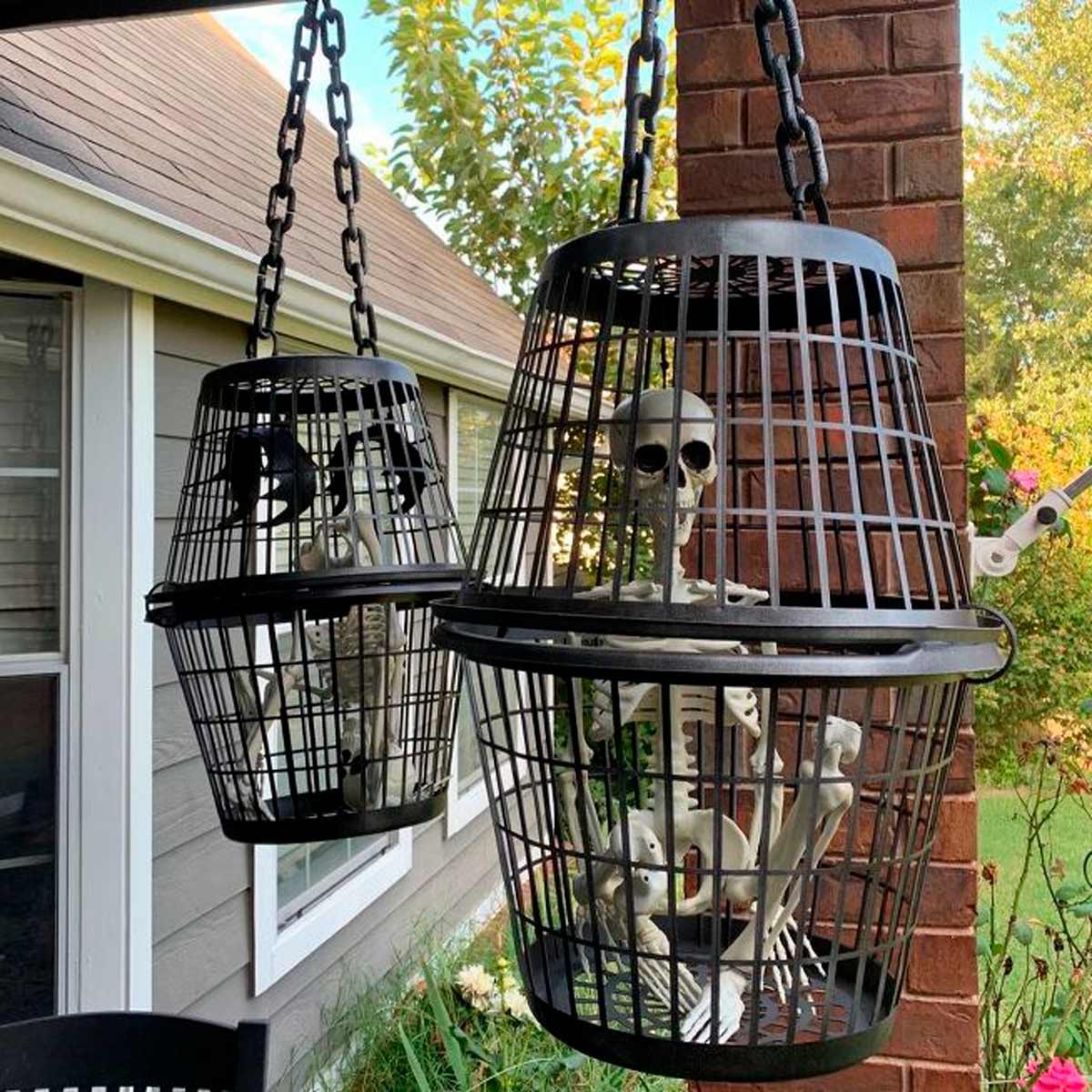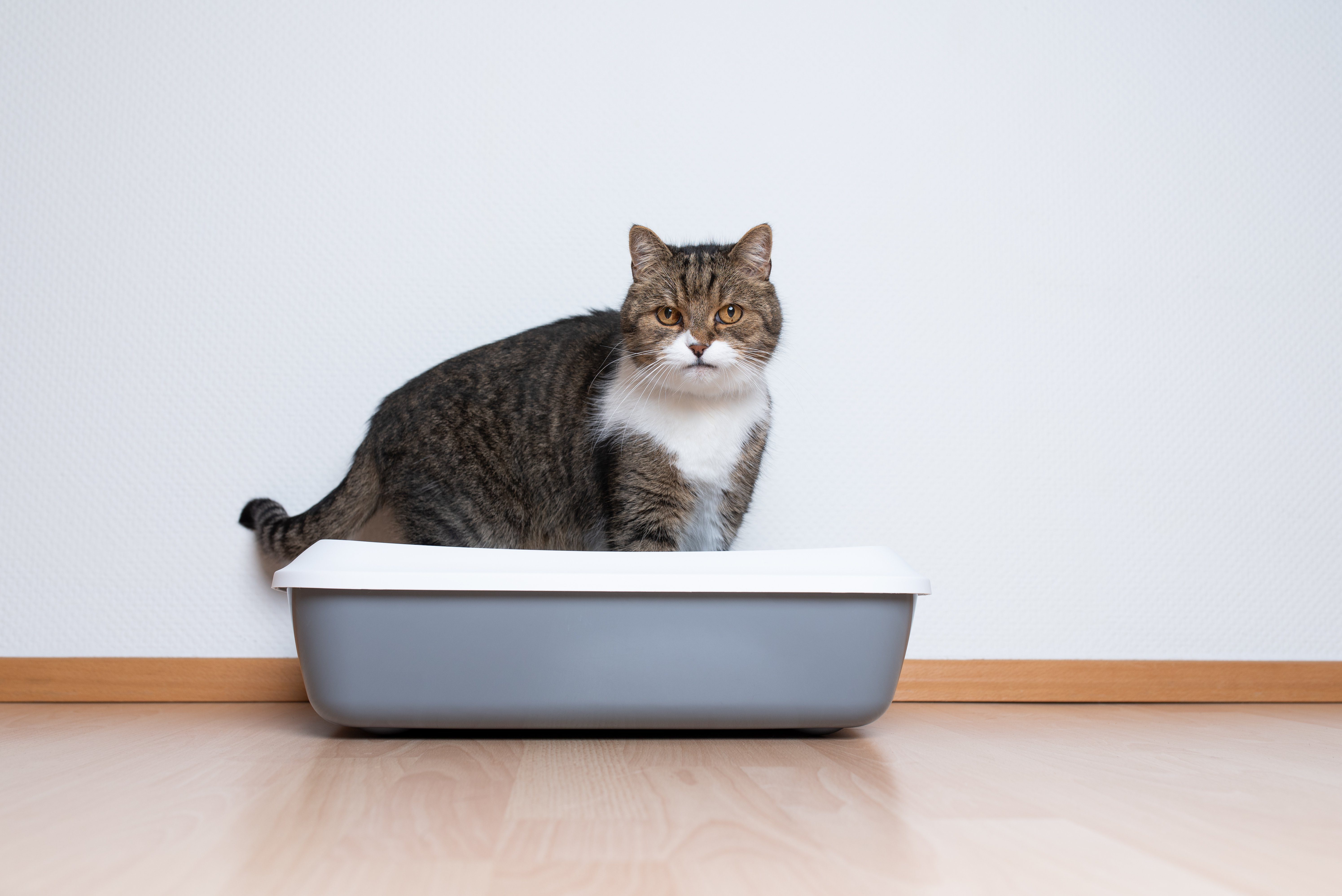
How to tell if raw chicken is bad
Chicken is the number one food that causes food poisoning. So it makes sense that people want to know how to tell if chicken is bad. Here’s advice from the United States Department of Agriculture Food Safety and Inspection Service (USDA) and a dietitian on how to tell if chicken has gone bad.
Check the date
Checking the date is the first step to see if raw chicken is safe to eat. If the printed date passed, the quality of the meat isn’t that great, although it’s still usable. The USDA recommends people cook raw chicken within one or two days of the date on the package. The advice differs per type of meat, however. (Here’s why you should never wash chicken before cooking it.)
Use your senses
Check with your eyes, nose, and fingers before eating chicken that might be bad. Raw, fresh chicken that isn’t bad does have a very faint, mild odour, according to Malina Malkani, MS, RDN, CDN, the Media Spokesperson for the Academy of Nutrition and Dietetics. Spoiled chicken, however, has an obvious rancid or sour smell. And as it spoils, the colour of the chicken changes from pinkish to grayish, Malkani says. And rather than having a moist, glossy feel, rotten chicken is covered in a thick layer of what seems like sticky slime, adds Malkani, creator of the Wholitarian Lifestyle. If you’re still in the store buying chicken, the package should feel cold to the touch, per the USDA.
How to tell if cooked chicken is bad
Cooked chicken lasts three to four days in the refrigerator, according to Malkani. If you’re unsure, use your senses again to check if cooked chicken is inedible. “Other signs that chicken has gone bad are foul odours, a slimy texture, and a change in colour from white or brown to grayish, greenish, or mouldy,” Malkani says.
Remember, how to tell if chicken is bad comes down to colour, texture, and odour. If one or more of these things seem “off,” it’s a safe bet to toss it out. If your chicken passes all these tests, however, find out how to perfectly roast chicken thighs every single time.

Starch is the problem
When preparing a meal for guests, there are so many ingredients to chop, proteins to marinate, and sides to prep that you’ll want to make sure all that hard work pays off. The last thing you need is a side dish full of grey potato salad or a muddled brown mash. Here’s how to keep potatoes from turning brown, so they’ll be worthy of both your finest dinner party and your casual weeknight meals.
If you’ve ever cubed a potato only to come back to a brownish-grey mess on your cutting board 10 minutes later, you’re not alone. Potatoes brown quickly when exposed to fresh air because they are jam-packed with starch. When these starches are exposed to oxygen, they undergo a process called oxidation, which leaves your potato with a grey-ish or brownish tint. They’re 100 per cent edible, but instantly less appetizing.
Slow browning with water
The easiest (and most common) method for protecting your precious potatoes from browning is to use cold water. When sliced spuds are placed in water, the oxidation process slows.
Make-ahead tip! Sliced, shredded, cubed, or really any kind of peeled potato can be stored in cold water for about 24 hours before any noticeable change happens to the potato’s structure or texture.
Grated potatoes brown even faster than cubed ones, so waste no time getting them into water. Fill a bowl with just enough cool water to cover your potatoes by about an inch. Place your mandoline and grater directly over the bowl and grate straight into the water to keep your potatoes as white as possible. (Don’t miss these other sweet potato mistakes.)
Acid stops it altogether
As mentioned above, placing spuds in water will slow the oxidation process, but it will not stop it. If you’re planning to store your potatoes in water for more than six hours, say overnight, adding a bit of acid is a good idea.
Lowering the pH of the potato helps fight off oxidation. Just like squeezing a lemon on sliced apples, a bit of lemon juice or white vinegar in the bowl with the potatoes will ward off grey hues. Use the ratio of one teaspoon to a 1.9 litre of water to get all the anti-browning impact with no notable flavour changes.
Discover the secret ingredient that totally transforms sweet potatoes.

Here’s what to say—and not say
When loved ones are sick, you’re desperate to find ways to comfort them. Unfortunately, your well-meaning attempts can sometimes fall flat. To help you navigate these sensitive situations, we asked Fran Walfish, PhD, a relationship psychotherapist, author, and consultant on CBS’ The Doctors to give us some pointers. Here are a few do’s and don’ts to help you truly comfort the sick people in your life.
The biggest mistake people make is being vague, so DON’T ask “How can I help?” Walfish says. Patients don’t want the burden put on them to come up with something you can do so if you really want to be useful, identify something that needs doing and offer to do that. Think cooking dinner, cleaning, babysitting children, driving them to appointments, or picking up groceries. If you’re still tempted to be general this powerful story will convince you to stop saying “Let me know if you need anything.”
DO say, “Do you want me to come over while you wait for test results?” Having someone available when they get emotionally charged news can be invaluable, Walfish says. Check out more simple ideas to brighten someone’s day.
DO say, “I’m bringing dinner Thursday. Do you want lasagna or chicken?” Giving them a choice allows them to state a preference without overwhelming them. Be sure to ask about allergies and how many people will be eating. Consider bringing a meal that can be easily frozen and reheated.
DO say, “I have Monday free if you need me to run some errands or take you somewhere.” Letting them know your schedule isn’t being picky, it’s a kindness. This way they won’t feel as if they’re imposing, she says. Is it a mental illness? Try these tips to help someone with depression.
DON’T say, “You look great.” Very sick people are aware that their hair is falling out, their skin is covered with sores, or they’ve become skeletal. Avoid commenting on appearances totally or stick to things that feel more genuine, Walfish says. For example, “Your eyes are sparkling” or “I can see your determination.”
DO say, “Can I take your kids for a play date? My kids would love to have friends over.” When a parent is sick, their children often suffer as well. Keeping them as normal as possible will also help their parent feel better by letting them know their little ones are being cared for, she says.
DO say, “No response necessary.” Patients, especially those with long-term illnesses, can get overwhelmed with the burden of keeping everyone informed and feeling appreciated. Take this burden off of them by letting them know you don’t expect or need a reply if they’re not feeling up to it. When you drop off a gift or meal, tell them that no thank-you card is necessary. (And consider letting them keep the Tupperware too!)
DO say, “I don’t know what to say, but I care about you and I’d like to listen.” It’s totally fine to admit that you love them but you don’t know what to do, Walfish says. Most people are thrown for a loop by a serious or chronic health condition. This also gives them an opening to talk if they like.
DO say, “I need to go now.” Most sick people cannot handle long visits so don’t overstay your welcome. Try visiting for 20 minutes, even less if the patient is tired or in pain. And while you’re there, wash a few dishes, clean the room, and take out the trash when you leave.
DO say, “Would you like to hear the latest updates on our friends?” When you don’t know what to say, a change of topic goes a long way. Patients are often sick of talking about their illness and will be excited to hear how common friends and family are doing. You can also bring up more general news—almost everyone has an opinion about the senator’s indiscretion, the underdog in the playoffs, or the latest celebrity gossip.
DO say, “Do you just need to vent? I’m all ears!” And then, listen. Listening attentively can be the best gift you can give a person, Walfish says.
DO say, “I really admire how you are handling this. I know it’s difficult.” A little sympathy and a compliment are almost always welcome.
DO say, “It’s okay not to be the perfect sick person.” Patients can feel a lot of pressure to “be strong” “stay positive” or “fight hard”, even when they’re feeling sad and weak. Let your loved one know that however they are feeling is acceptable and you don’t expect them to be the poster child for cancer, Walfish explains.
DO say, “I love you.” When all else fails, simple, direct emotion is the most powerful gift you can give a loved one going through pain. It doesn’t need to be fancy. It just needs to be sincere.
Next, learn what not to say when someone comes out of the closet.

There’s nothing like a good riddle to stimulate your mind and give you an excuse to channel your inner Sherlock Holmes. Sure, the thrill of solving puzzles may not give you the adrenaline rush of a skydive, but regularly doing logic and crossword puzzles can keep your brain young as you age. And they’re just a lot of fun.
Now, you can take your problem-solving skills to the next level with a riddle that Albert Einstein invented himself. The story goes that Einstein wrote this complicated logic puzzle when he was a young man, and he estimated that only two per cent of the people who tried to solve it would successfully do so.
While there isn’t any solid evidence to confirm that Einstein created it—and somehow prophesied the exact number of people to get it right—it’s still a mind-bending puzzle. (Doing some of these weird brain puzzles can make you smarter, too!)
Here’s the setup: There are five houses, each painted a different colour. In each house lives a person with a different nationality. These five owners drink a certain type of beverage, smoke a certain brand of cigar, and keep a certain pet. No owners have the same pet, smoke the same cigar, or drink the same beverage.
The question is: who owns the fish?
Here are the clues:
- The Brit lives in the red house
- The Swede keeps dogs as pets
- The Dane drinks tea
- The green house is on the left of the white house
- The green house’s owner drinks coffee
- The person who smokes Pall Mall rears birds
- The owner of the yellow house smokes Dunhill
- The man living in the center house drinks milk
- The Norwegian lives in the first house
- The man who smokes blends lives next to the one who keeps cats
- The man who keeps horses lives next to the man who smokes Dunhill
- The owner who smokes BlueMaster drinks beer
- The German smokes Prince
- The Norwegian lives next to the blue house
- The man who smokes blend has a neighbor who drinks water
Take some time and think it over. Draw out each house. Make a chart for each category, if you want to get really detailed. (Trust us, you do.)
Do you know who owns the fish? Watch this video to see if you’re right!
Next, try your brain at these math riddles.

Making skeleton cage Halloween decorations
When decorating your home for Halloween, you don’t have to blow your budget. Amanda Everhart of Harts and Crafts Design came up with this clever idea using inexpensive dollar store items for some scream-worthy DIY Halloween decorations. The best part? They’ll only cost you about $4.
Everhart uses two small laundry baskets to create “cages” for skeletons that she then hangs from her front porch. She found all the items needed at Dollar store, making this a great idea for bargain Halloween decorations.
“I make many of my own decorations for holidays, and friends and family always love them. I always get the questions ‘Did you make that!?’ or ‘How did you do that,'” Everhart told Family Handyman. “These baskets are super easy to put together.”
Supplies
- Zip ties or shower curtain rings
- Two round laundry baskets (If they sell black, buy those to save a step later)
- Fake chain
- Black and metallic silver spray paint
Steps
For her first step, since the baskets had slightly raised handles, Everhart cut out a spot for the handles on one of the baskets. This is so the two baskets can sit flush with each other. She used the cut basket as the top of the cage so if they are placed in an area that will get rained on, the water can drain out instead of creating a puddle on top of the basket.
“The hardest part is cutting the handles from the baskets, but that step could always be omitted if someone doesn’t feel comfortable cutting them out,” she said.
Next, use a shower curtain ring or zip tie at each end of the chain to attach it to the bottom side of one basket. Everhart also used a couple of extra rings to hold the two baskets together.
While Everhart used skeletons in her cages, you can use any fall or Halloween decor, such as scarecrows, ghosts or witches. Check out a craft store such as Michael’s or Hobby Lobby for these types of decorations.
Everhart then spray-painted the baskets and shower curtains rings using a flat black paint (you can skip this step if your baskets and rings are already black). Once that was dry, she went over them with a metallic silver to make the baskets look dirty and aged.
Then, just put everything together and hang it up!
Find even more inspiration from these pumpkin carving ideas.

Studying stall use
When faced with a choice, which stall do you select in a public bathroom? Typically, you’d enter any of the ones that appear reasonably clean and hope for the best, right? But what if you could take the guessing game out of this dire dilemma?
When it comes to public restrooms, there’s a prevailing idea that you should avoid the middle stalls if possible and instead choose the first stall. The thought is that it’s the least used, meaning it’s the only one you should be using because it’s likely to be the cleanest. (These are the everyday items that are dirtier than a toilet.)
“It’s true that if you take a survey—and there are a couple that have been done, people tend to (subconsciously or not) go to the stalls that are in the more sequestered section of the bathroom, and avoid those up front,” says Philip Tierno, PhD, clinical professor in the department of pathology with NYU Langone Health in New York City.
One study back in 1995 in Psychological Science examined this—and perhaps kicked off the fascination with what bathroom stall to choose. Psychologist Nicholas Christenfeld tracked how often the toilet paper was changed in each of four stalls for 10 weeks. His results: While 60 per cent of finished rolls came from the middle stalls, only 40 per cent came from those at the ends. That indicates that far more people used the stalls in the middle than random probability might anticipate.
A survey from New York Magazine took the analysis a step further by analyzing the preferences of men and women. A majority of both men and women prefer the middle stall, but since the stalls and urinals in the line are “rarely truly identical,” men then show a preference for whatever is closest to the door while women go to what’s furthest away.
Still, just because fewer people use an end stall, that doesn’t necessarily mean it’s cleaner. Some viruses need very few cells to cause an infection. For instance, norovirus needs just one cell to make you ill. That’s not to scare you, but to give you the heads up that “just because a stall looks clean doesn’t mean it is,” says Tierno. Same goes for just because you choose the first stall, doesn’t mean it’s clean either. “It’s not as simple or straightforward as it sounds,” he says.
That’s why practicing smart public restroom hygiene habits is so important. Here’s what Tierno does: he carries his own towelettes. He washes his hands at the sink (this is a must–whether you pressed the flusher or not, you just contaminated your hands by touching the door and latch), then dries his hands with the towel, and uses the towel to shut off the sink. After, he uses the towel to open the door and drops the towel outside. (Ideally, in a wastebasket.) That’s the best way to protect yourself from germs.
While you’re at it, read on for more bad bathroom habits that impact your health and hygiene.

How do cats know how to use a little box without being trained?
Cats are pretty tidy creatures. They clean themselves, keep their fur relatively knot-free, and they don’t need to be potty trained. From a young age, domestic cats know to use a litter box, unlike puppies that use your floor for the first couple of weeks before being trained to go outside. But haven’t you always wondered how they are born knowing how to use a little box?
It all comes down to animal instincts. “Cats have an inherent desire to bury their waste in order to cover their scent from other animals,” says Jordan Cassidy, DVM, PetSmart resident veterinarian. “Given the texture and consistency of most commercially available cat litters, it makes it easier for cats to cover their droppings, which is what naturally draws them towards a litter box.” So, right from the start, they are drawn to the litter box when they need to go to the bathroom. (Make sure to avoid these dangerous mistakes cat owners make.)
Are there some cats that never learn how to use a litter box?
Dr. Cassidy says that this can happen, but it is very rare. “A cat’s natural instinct (even a stray one) is to bury their droppings and cover their scent. If your cat stops using their litter box it is important to speak with your cat’s veterinarian to determine if there are health or behavioural concerns that need to be addressed.”
Is there a reason some cats don’t use their little box on occasion?
If your cat typically uses their litter box but every so often eliminates outside of it, it’s not because they forgot how to use it. There are actually underlying reasons.
“The litter box may be too small, in a busy area of your home or difficult to access,” says Dr. Cassidy. “The litter box may also be too dirty; cats are clean animals and will typically avoid the litter box if it isn’t emptied regularly.” He says that there are other behavioural and health concerns that may be causing your cat to avoid their litter box. If you’ve cleaned the litter box, tried a different sized one, and moved it to a different spot in your house and your cat still isn’t using it, he recommends seeing your veterinarian.
Wish you had a secret decoder guide to cat language and behaviour? Here’s a primer to things your cat wishes you understood.